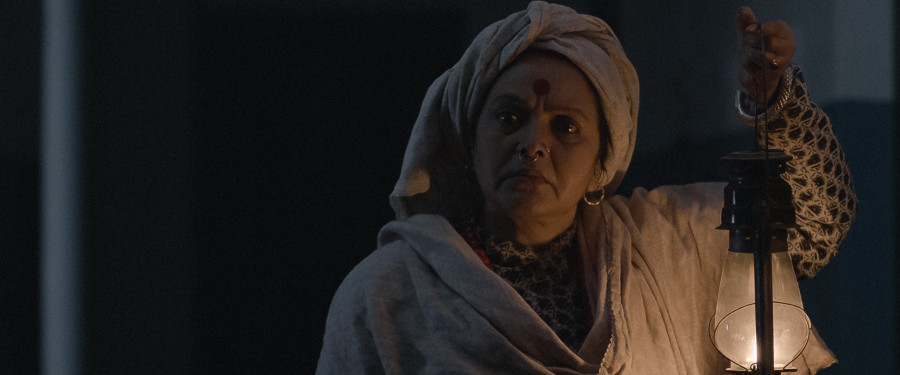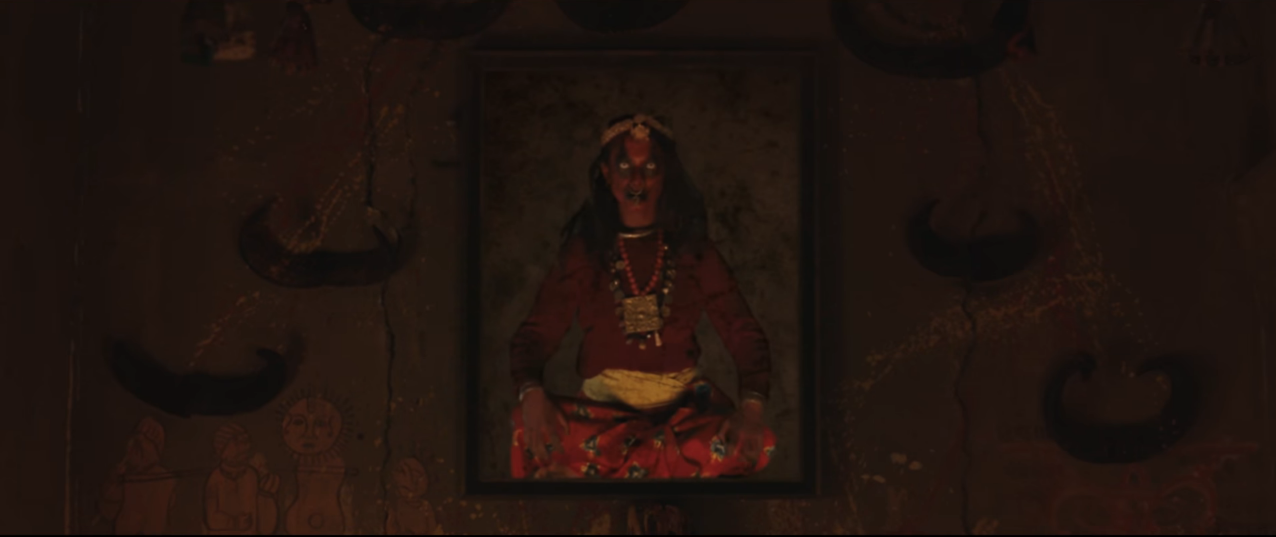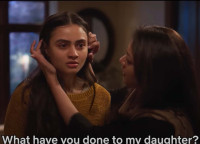Movies
‘Kathaputali’ is too predictable, but it has its moments
Although at one point the film becomes tiresome, it’s Mithila Sharma’s powerful performance that keeps on holding the film and its weak screenplay.
Ankit Khadgi
(Editor’s note: The review contains some spoilers of the film)
A prince of a land where people are revolting against monarchy gets trapped in a palace filled with secrets.
This is the one-liner of the latest Nepali horror film, ‘Kathaputali: The Puppet’. The movie stars an ensemble cast of known actors like Karma Shakya, Mithila Sharma, Gauri Malla, Usha Rajak, and Shilpa Maskey. But sadly, as the film progresses, its narrative gets limited to just one-liners—making the film too long, predictable, and sometimes even tiresome.
Akash (played by Shakya) is a prince of some land we aren’t told about. His father, Dhurba Koirala, is a power-hungry king for whom his throne matters more than his family members and subjects.
As the country's citizens start rebelling against the monarchy, Akash is forced to leave his castle to find ways to calm down the public. But due to some circumstances, he gets injured and is forced to take refuge in a palace, where Budi Aama (played by Mithila Sharma) is the caretaker.
From the moment he steps into the palace, strange things start happening, and it’s through Akash, we experience a tale of horror, revenge, and betrayal.
Directed by Veemsen Lama, the film does have a few elements that we, as an audience, seek in a horror film. There’s an interesting premise built from the beginning, as we are taken into a world that dates back a few decades, a time when people lived in houses that were big enough to hide the secrets of its inhabitants.
But as the narrative proceeds, the film gets trapped in its storyline as it becomes too clichéd and predictable, diminishing the movie's impact on the audience.
In the film, Akash, who’s rescued by Shova (played by Rajak), starts seeing ghosts in his dreams and waking hours during his stay at the palace. Time and again, he shares with Shova and Budi Aama that he saw a strange figure or heard something unnatural. But both of them refute his claims and try to convince him that it’s just his imagination and nothing else.
These are moments in the film where it tries to scare us. And some scenes in the movies manage to do that, especially the scene where a ghost flies above Akash’s body, and even the movie's final act is genuinely petrifying.
The makers, however, rely too much on jump scare–a constant clichéd trope that is used in every other horror film. And because of this, the audience is completely aware of when a scary scene is approaching, defeating the whole suspense essence of a horror film.
Thus, the biggest letdown of the movie becomes its writing. Although it tries to project itself as a story with a complex plot and characters, its inability to free itself from clichés makes it conventional.
Written by Sampada Malla, known for her stints in Bollywood and Hindi television industry, the film isn’t backed by a story that has a novelty factor. While Sampada attempts to give originality to the plot (she takes inspiration from the Nepali folk tales related to jhakri, kichkandi, and many more), her characters, except Budhi Aama, feel mundane. This, in turn, makes the audience get easily disconnected from the situations and sufferings of the characters.
For instance, Akash, with whom we witness the horrifying incidents, is so badly written that not only do we not feel anything for him, the actor (Karma) who plays the role doesn’t get enough material to support his performance.
Thus, his character becomes one-noted, failing to derive any emotions of empathy from the viewers and making Karma’s performance weak and unconvincing.
The same goes for Shova, who, although playing a prominent role in the film, fails to make a bigger impact because her character has no solid backstory. In the movie, she plays a Newa girl who’s just there to help Budi Aama. Whenever she speaks, her Newa accent becomes prominent, which is a matter of debate in itself as it is a time-worn stereotypical way of showing a Newa character in movies.
Rajak, who plays Shova, does a commendable job, even when her character isn’t backed by solid writing. Her accent might sound annoying initially, but she never drops it off.
Not much can be said about Gauri’s performance, though. Gauri, a celebrated actor, plays the Queen (Akash's mother) and is given too little to play around with compared to her co-actors. It won’t be wrong to say that the talent she possesses is wasted in the film as her character gets lost in the movie's convoluted plot.
Shilpa’s small but significant role is impactful, but Mithila, the legendary actor, impresses the most in the film with her impeccable acting prowess. She’s literally the backbone of the film and gives a solid performance, something that will be talked about for years. Unlike her previous roles in movies like ‘Uma’, ‘Adha Love’, and ‘Ama’ where her characters were often limited to a dutiful mother, in ‘Kathaputali’, she is given a complex character, which she pulls off amazingly.

Whether she’s crying when she shares an old secret, which later shapes the story and its climax, or in scenes where she’s angry, relieved, and in a state of disgust, her acting invokes a sense of empathy for her character, even when the film starts losing its charm.
Credit where credit is due: for writing a strong character like Budi Aama, Sampada deserves an acknowledgement as we rarely see such a complex and nuanced woman character in Nepali films. Only if the makers had written a nuanced story, with equally complex characters like hers, Mithila would have shone brighter.
But it's important to acknowledge that although it might not be the maker’s intentions, Mithila’s character does fall into the trap of a commonly used trope—using sensitive issues like sexual abuse for character transformation and giving agency to a female character—that we have seen in recent female-led horror films.
There are also pointable technical flaws in the film that need to be addressed. For instance, since most of the film's major scenes occur at night, due to lack of proper lighting, we cannot see what’s transpiring on the screen clearly.
Regarding the production, the film could have done better as well. Except, the climax, the production design seems ordinary, and the makers haven't made extra efforts to indicate the time and milieu the film is based on. In one of the turning points in the movie, they even make a silly mistake where they show a car that has a vehicle registration plate of recent times on it.
Meera Maharjan’s costume design is another disappointing element of the film. The characters’ costumes, especially of the royal family members, look so gimmicky that they look like the ones commonly used in plays or for fancy dress competitions.
Nevertheless, the makers of the film deserve applause for branching out and making a horror movie when the industry is more focused on churning out comedy movies.
Only if the makers had paid attention to creating nuanced characters, the film could have made more impact than it has among the audience and the Nepali film industry.




 21.12°C Kathmandu
21.12°C Kathmandu










